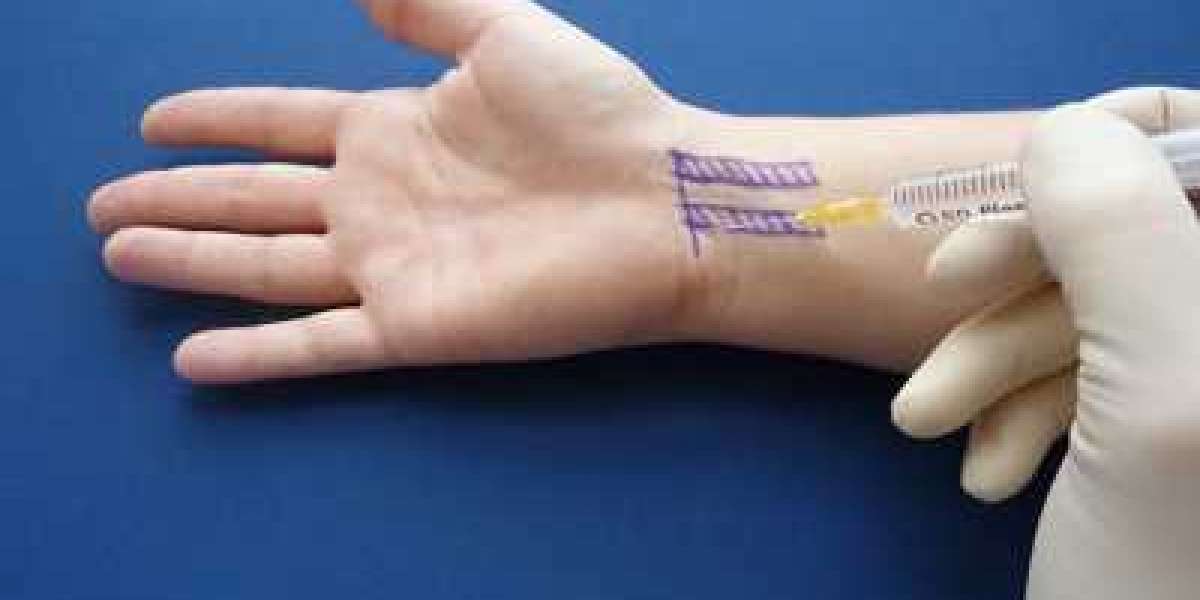Carpal Tunnel Syndrome (CTS) is a common condition that affects millions of people worldwide, particularly those who perform repetitive hand and wrist movements. The carpal tunnel is a narrow passageway in the wrist surrounded by bones and ligaments. This tunnel houses the median nerve, which controls movement and sensation in parts of the hand. When this nerve becomes compressed or irritated, it leads to numbness, tingling, weakness, and pain — hallmark symptoms of carpal tunnel syndrome.
People who spend long hours typing, using vibrating tools, or performing repetitive motions with their hands are at greater risk. The condition can also be influenced by factors such as genetics, wrist anatomy, arthritis, pregnancy, and certain medical conditions like diabetes or thyroid imbalance. As the symptoms worsen, many seek both conservative and interventional treatments to restore comfort and hand function.
The Role of Injections in Carpal Tunnel Treatment
When conservative treatments such as wrist splints, ergonomic changes, or physical therapy fail to provide relief, medical professionals often recommend targeted injections to help manage inflammation and pain. These injections are not a cure for carpal tunnel syndrome but serve as an effective way to reduce discomfort and improve hand mobility, allowing patients to resume their daily activities with greater ease.
The most commonly used injections are corticosteroids, which have strong anti-inflammatory properties. By reducing swelling around the median nerve, these injections alleviate pressure within the carpal tunnel. In some cases, physicians may also use other substances, such as local anesthetics, to provide immediate pain relief.
How Carpal Tunnel Injections Work
Carpal tunnel injections are designed to target inflammation directly at its source. The procedure involves the precise placement of medication into or near the carpal tunnel to minimize swelling of the tendon sheaths surrounding the median nerve.
Once administered, the corticosteroid begins to suppress the body’s inflammatory response. This reduction in inflammation decreases compression on the median nerve, thereby relieving symptoms such as pain, tingling, and numbness. The effects of the injection may become noticeable within a few days, with many patients reporting significant improvement in hand strength and comfort.
In some individuals, the relief can last for several weeks to months, depending on the severity of the condition and the body’s response to treatment. For others, multiple injections spaced several months apart may be required to maintain symptom control.
The Procedure: What to Expect
A carpal tunnel injection is typically performed in a clinical setting and takes only a few minutes. The process is relatively straightforward but requires precision and anatomical expertise to ensure that the medication is delivered effectively and safely.
Preparation: The patient is usually seated with their hand resting on a flat surface. The area around the wrist is cleaned and sterilized to prevent infection.
Anesthesia: A local anesthetic may be applied to minimize discomfort during the injection.
Injection: Using a fine needle, the healthcare professional injects the medication into the carpal tunnel. In some clinics, ultrasound guidance may be used to ensure accurate placement of the needle.
Post-Procedure: After the injection, patients are typically observed for a few minutes before being allowed to leave. The wrist may feel numb or slightly sore for a few hours.
It is recommended to rest the hand for a day or two after the procedure and avoid strenuous activities. Most people can return to normal routines shortly afterward.
Benefits of Carpal Tunnel Injections
One of the key advantages of these injections is their ability to provide quick and targeted relief without the need for surgery. They can be an invaluable option for individuals with mild to moderate symptoms who are not yet ready to consider surgical intervention.
Some of the most notable benefits include:
- Reduced Inflammation: The corticosteroid medication significantly lowers swelling and pressure on the median nerve.
- Pain Relief: Many patients experience rapid improvement in pain and discomfort.
- Improved Function: The injection can help restore grip strength and dexterity.
- Non-Surgical Option: It offers an alternative to surgical release, particularly for patients who prefer conservative management.
- Diagnostic Value: The response to the injection can help confirm that symptoms are indeed due to carpal tunnel syndrome rather than another condition.
Possible Side Effects and Risks
Although carpal tunnel injections are generally safe, they are not entirely without risk. Understanding potential side effects can help patients make informed decisions about their care.
Some of the possible side effects include:
- Temporary soreness: Mild discomfort or tenderness at the injection site is common and typically resolves within a few days.
- Numbness or tingling: Temporary changes in sensation may occur as the anesthetic wears off.
- Infection: Although rare, any injection carries a small risk of infection.
- Skin changes: In some cases, skin thinning or discoloration may occur around the injection site.
- Tendon weakening: Repeated steroid injections over time may increase the risk of tendon weakening or rupture.
To minimize complications, injections should always be performed by a qualified healthcare professional with experience in musculoskeletal or orthopedic procedures.
Effectiveness and Duration of Relief
The effectiveness of carpal tunnel injections varies depending on the severity of nerve compression, the duration of symptoms, and individual patient factors. In many cases, a single injection can provide significant relief lasting from several weeks to a few months.
However, it is important to note that while injections are effective for short-term management, they do not address the underlying cause of the compression. For patients with chronic or severe carpal tunnel syndrome, injections may be a temporary measure before pursuing surgical options such as carpal tunnel release.
In general, individuals who respond well to the first injection often have better outcomes with subsequent treatments, but medical professionals usually limit the number of steroid injections to avoid potential side effects associated with repeated use.
Alternative Treatments for Carpal Tunnel Syndrome
In addition to injections, there are several other non-surgical and surgical options available for managing carpal tunnel syndrome.
Non-surgical approaches include:
- Wrist splinting: Wearing a splint at night can help keep the wrist in a neutral position, reducing pressure on the median nerve.
- Physical therapy: Specific exercises can help stretch and strengthen the wrist and hand muscles.
- Lifestyle changes: Adjusting repetitive tasks, improving posture, and taking regular breaks during hand-intensive work can alleviate strain.
- Medications: Nonsteroidal anti-inflammatory drugs (NSAIDs) may help reduce pain and swelling.
If these measures fail to provide adequate relief, surgical intervention may be considered. The most common procedure is carpal tunnel release surgery, which involves cutting the ligament pressing on the median nerve. This surgery typically has a high success rate, especially when performed on patients with persistent symptoms despite conservative treatment.
When to Consider Carpal Tunnel Injections
Carpal tunnel injections are best suited for individuals who have moderate symptoms that do not improve with initial conservative measures. They can also serve as an interim solution for those who wish to delay or avoid surgery.
If you experience persistent numbness, tingling, or pain in your hands that interferes with sleep or daily activities, it is essential to consult a healthcare provider. They can evaluate your condition using physical exams and diagnostic tests, such as nerve conduction studies, to determine whether an injection is appropriate.
Living with Carpal Tunnel Syndrome
Managing carpal tunnel syndrome involves more than just medical intervention — it requires lifestyle adjustments, ergonomic awareness, and proactive care. Incorporating proper wrist posture, regular stretching, and strengthening exercises can reduce strain and prevent symptom recurrence.
Patients who receive carpal tunnel injections often benefit from combining them with physiotherapy, hand exercises, and ergonomic modifications at work or home. Maintaining overall health through proper nutrition, regular exercise, and hydration can also promote nerve function and recovery.
Conclusion
Carpal tunnel injections offer a valuable, minimally invasive treatment option for those seeking relief from the discomfort and limitations caused by carpal tunnel syndrome. By directly targeting inflammation, these injections can help restore comfort, mobility, and function in the hand and wrist.
While they are not a permanent solution, they play a crucial role in managing symptoms and improving quality of life for many patients. Working closely with a qualified healthcare provider ensures that you receive the most appropriate treatment plan — whether that involves injections, physical therapy, or surgery — tailored to your individual needs and condition severity.














